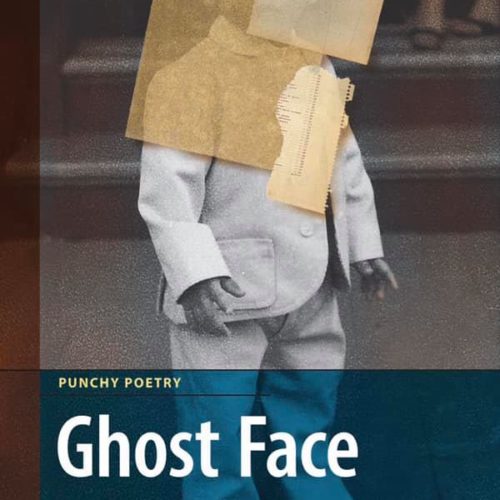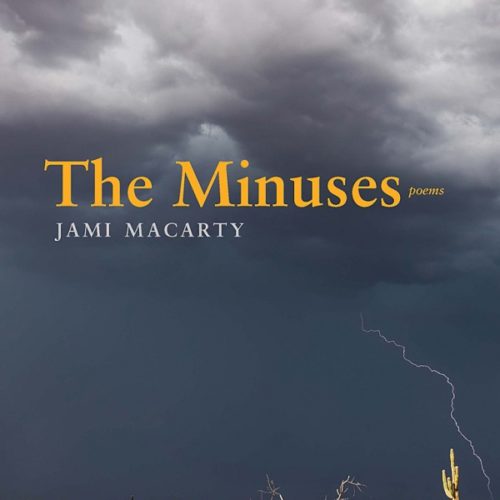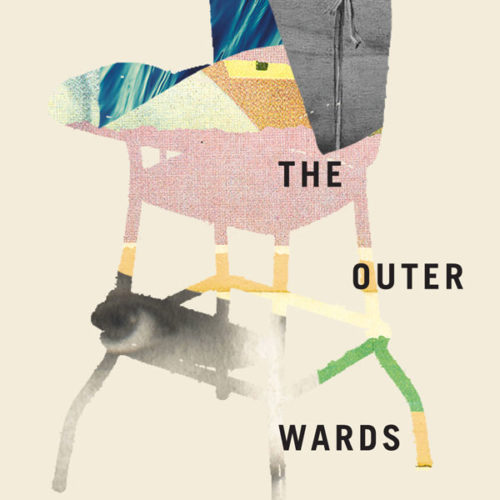Theophylline: A Poetic Migration via the Modernisms of Rukeyser, Bishop, Grimké (de Castro, Vallejo)
By Erín Moure
House of Anansi Press 2023
Reviewed by Bill Neumire
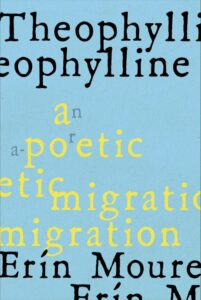
Given its multifaceted, slippery nature, I’m trying to decide how best to invite you into Erín Moure’s latest book Theophylline [in one reading, subtitled “a poetic migration via the modernisms of Rukeyser, Bishop, Grimké (deCastro, Vallejo)”; in another “an aporetic migration”]. For one thing, I hesitate in the most splendidly knotty way, to offer a genre—a term I grow more convinced each day does little to help readers or writers. This book is translation, biography, criticism, journaling, and poetry. It is a record of reading, an essay on the value of translation, and a research project taken on while Moure was spending nine days in Harvard’s Woodberry Poetry Room in 2017. Early on in the book, she—and the sense of speaker here is troubled and textured by an alter named Elisa Sampedrín as well as a consistent haunting by other voices—says of her time in Woodberry that she was of this aim:
Wanting to attend to three things:
-
- The process of hearing a voice
- The place where the voice is heard
- The impulse to make a poem instead of…
something else
The book then addresses three female modernist poets characterized as having lived through migrations: Elizabeth Bishop, Muriel Rukeyser, and Angelina Weld Grimké. Meanwhile, in the contemporary moment, our multi-layered author, Erín Moure/Elisa Sampedrín, is an acclaimed poet and translator with 18 books of poetry, a volume of essays, and 21 books of translation from French, Spanish, Galician, Portuguese, and Ukrainian. All of those interests, genres, and tongues seem to come together in Theophylline, which includes biographical information on each of the poets along with personal takes and musings on each as well as excerpts from their letters, poems, and interviews. In addition, Moure writes present tense journal style about her process of seeking out these poets and their poems. The pages that result are frequently marked with visual elements, typographical play, words stricken through, multiple languages, and images of clippings from printed text.
It doesn’t take long to see the title at work; Theophylline refers to a drug used to treat asthma patients, and the poet reveals her history with the breathing condition. This becomes a jumpoff for a poetic discussion of asthma as it connects to breath and as breath connects to poetry, as the speaker says in the opening of the EB section, “Asthma keeps you up, a euphemism for wakefulness. You see animals and faces in the shadows. Your own animal cannot breathe, and tilts.” She continues in ‘Pyjamas: An Essay on Childhood with Asthma,’ “When you can’t breathe, there’s no loquacity. You must hold back energy, to minimize the need for oxygen in the membranes.” Experience of the world is suddenly shifted, and she connects breath to silence and uses this to connect to Rukeyser’s “‘vocabulary of (…) silences.’” Most troublingly, she notes of Grimké, “Her voice is not mechanically recorded; it is found in no sound archive though she lived until 1958.” According to Woodberry’s own website, the “library of voices,” which opened in 1931, “holds 6,000 recordings on a range of media that span the 20th and 21st centuries.” It’s an incredible collection, but here, with Grimké, a black female poet, Woodberry fails her. In Grimké’s textual poems and Moure’s wonderings, though, the poet can “sing // in singing’s absence.”
Of translation Walter Benjamin in his famous essay ‘The Task of the Translator’ said, “Translation ultimately has as its purpose the expression of the most intimate relationships among languages.” That, at Theophylline’s core, is what’s illustrated and what’s at stake, but how to express that relationship? In the Rukeyser section Moure says that the poet “is among the first to bring young Octavio Paz into English.” She follows this with her own translation of Paz’s poem ‘La Calle,’ followed by the original Spanish, followed by Rukeyser’s translation from 1948. She also includes variations where Elisa Sampedrín adds a translation, at times saying that ES “interferes” or “trans-alters” (in the end notes saying Sampedrín “worries the book”). She groans at ES in ‘Archaic Torso of Apollo Asthma’ where the parenthetical subtitle reads, “Elisa Sampedrín, gaffed from Rilke (argh Elisa, why?).” So how does Moure connect translation to Bishop, Rukeyser, and Grimké, three poets writing primarily in English? Her notion of migration leads her to bind them in elsewheres: “In the Room, the three women American modernist poets whose work/voices I have chosen to open myself to: all have in some way a relation to elsewheres. Thus translation. An elsewhere of nearly forbidden light.” Moure often theorizes on the page, and in an interview with Rob Mclennan for Ploughshares, she said the following of her experience with translation:
It seems natural to me to use in poetry all the words, or any of them. Different languages give you different worldviews, and change your head, and alter the muscles in your mouth. It feels good, and you start to hear things you couldn’t hear before. It’s the thrum, the gorgeous thrum, and it gets to you in the most beautiful ways.
Reflecting in Theophylline, she opines, perhaps controversially, “Translations age and need redoing (as they are readings, and readings are always contemporary), whereas texts, on aging, simply gather exegesis. Exegesis is reverence, points to the eternal. Translation is a cut in time, and its texts bleed time and are often later discarded, bled out.” It seems that, as the speaker declares, “Between languages, form is not still,” and this kind of un-stillness vibrates frenetically in Theophylline, a hectic, messy instability that is more an expression of dynamic relationship than it is a static settlement of language and poetry.
Starting from her physical position in an archive, one of the most funded and famous in the world, Moure interrogates and riffs on the practice of archiving itself: “The archive is a constructed memory. It is how the future as imagined from a present desires to see the past. Its past. It is how the imagined future desires.” What to say of the voices historically kept out of archives? She recognizes problems in writing of Grimké in the poem ‘Islant: the ‘is’ of silent is backwards, is I-slant’: “No recording of her voice is held on Earth (…) Her breath is not archived,” and given those gaps, Moure playfully speculates an imagined answer to voided biographical lacunae: “(sent she was, to board at Carleton Academy in Northfield, Minnesota where she fell in love / with a girl) (…) Surely Grimké, even out of curiosity, will have–at some point–read her mother’s books // (Shhh, her father is home).” Moure questions the position of an archive at all in the face of the voices that don’t exist in any record. But it is speculative fictionalizing that can at least offer a bridge to possibilities:
The Grimké family (for their own dignity) will perpetrate the idea that Angelina’s mother had abandoned the family, was mentally ill, even ‘incarcerated.’ You can still read this here and there. Sarah in fact travelled freely, wrote, published, collaborated (at times with men who later erased her authorly name). What if Grimké, Black and lesbian—her poems speak of her love of women, and her father was vehemently against her love relationships, female and male—will simply choose after her father’s death to live away from public view, to live and love in peace?
Moure speaks both affectionately and judgmentally of Bishop and Rukeyser. She’s critical of Bishop for the comfort and luxury her wealth provided, for “Bishop abetted more than she rebelled.” She says, “Bishop’s social conscience, unlike Rukeyser’s, was not a public rhetoric.” Moure recognizes, though, her own privileged position in time, saying, “Time’s threshold has changed; I see from a perspective not open to B.”
Perhaps two of the most idiosyncratic elements of this text are Moure’s fictional ES persona and a mysterious shoe diagram. Early, in ‘Mellifluous,’ we’re introduced to the visual motif of a shoe diagram with these lines:
that’s my shoe!
organism
cockroach
poem
In the end notes, the poet elaborates on the shoe as follows:
Martin Heidegger talked about Van Gogh’s shoes (the ones he painted, and perhaps wore) in his essay ‘The Origin of the Work of Art.’ Heidegger’s description of the shoes as women’s shoes (they are peasant boots and not gendered really) is the subject of much contention among critics. The essay was first published in German in 1950 and is in Martin Heidegger: The Basic Writings. New York: HarperCollins, 2008, 143-212, tr. David Farrell Krell. A sentence from the Heidegger essay prompted the drawing of a shoe in The Elements, a drawing that has infiltrated this book too.
Unlike an actual shoe, a diagram is an abstract possibility of a shoe, and unlike a comfortably settled set of lyric poems, Theophylline is a text that asks questions, explores curiosities, and lays bare internal doubts. In one moment Moure’s speaker says, “I don’t know why / poetry // made me like this.” It is a made thing stitched of made things, busy with footnotes and endnotes where Moure even cites herself and her works as sources multiple times. In the end, then, she says, “(this whole book, it occurs to me suddenly, is refusal, is an attempt at the something else…a listening-sorrow forward hear).” From the breath and language of others, Moure finds her own breath vocabulary, her own field of play, and in the process goes beyond mere homage into the electric field and unsettled history of these poets with whom she now breathes.
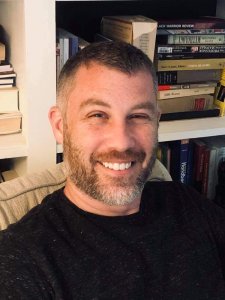
Bill Neumire’s second collection of poems, #The New Crusade, is available from Unsolicited Press. He serves as poetry editor for Verdad.
